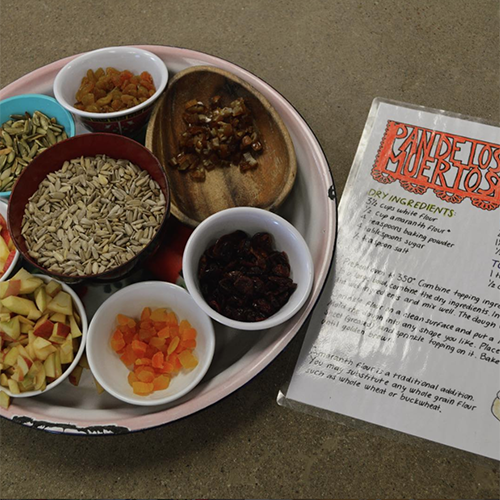For the Chef Meeting
- Pan de los Muertos recipe – PDF
- Ingredients and tools for demonstration
- Pan de los Muertos visual aid – PDF
For the Toppings
- Assorted seasonal fruit, such as apples, pears, and persimmons
- Assorted dried fruit, such as dried apricots, cranberries, raisins, and dates
- Assorted seeds, such as pepitas (pumpkin seeds), sunflower seeds, and sesame seeds
- Cinnamon
- Sugar





